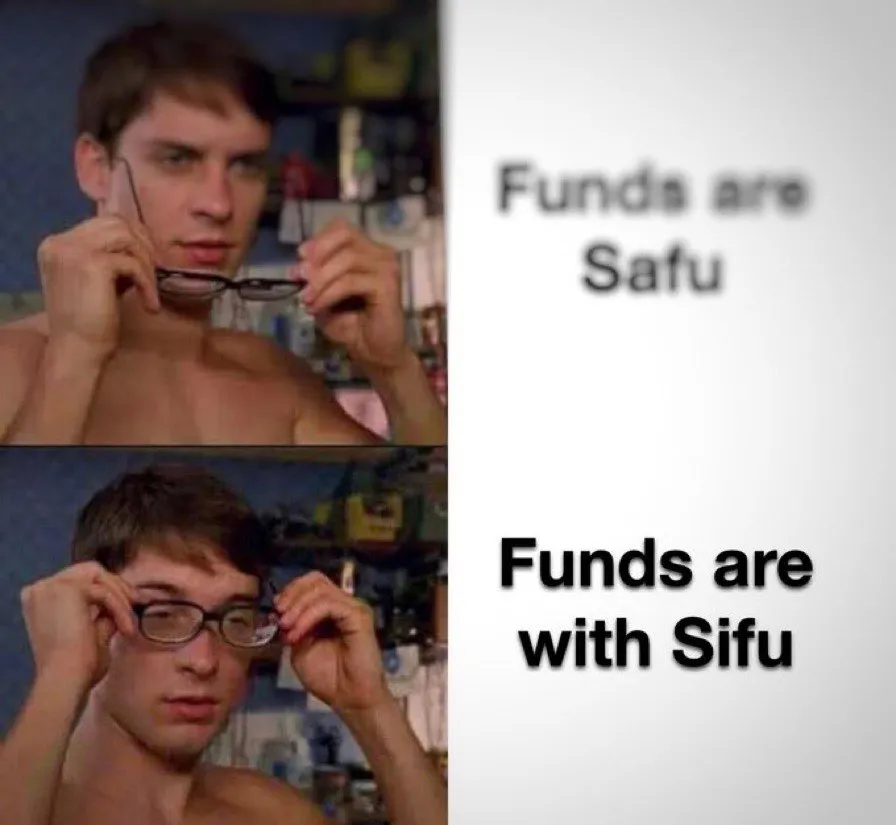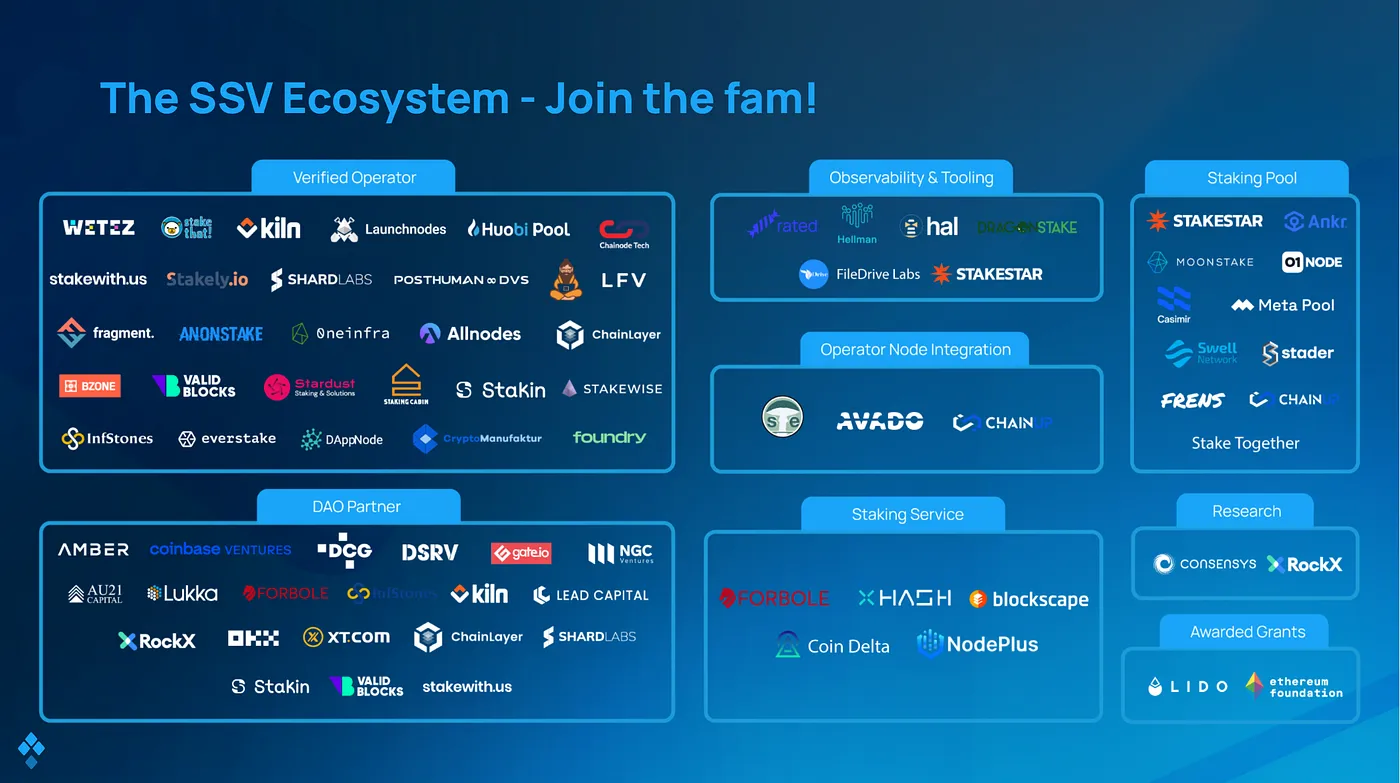
Special thanks to @Fod for feedback and corrections & @Dean for creating the sick poster!
Overview
· The lay of the land
· The problem
· The Product
· The moat
· The strategy
· Value capture
· Tl;Dr
The lay of the land
What is the opportunity sir?
Let’s start with understanding the lay of land of various staking applications and how SSV fits into the picture. Ethereum staking is becoming a huge industry, recently passing 20%(46 000 million USD at time of writing) of ETH supply. Just for comparison, the amount staked is more than the market cap of any other crypto assets besides Bitcoin.
The question is, who will be able to grab some nice piece of the pie?
The problem
Where is my backup sir?

The Ethereum staking industry has certain idiosyncrasies compared to other traditional infrastructure setup, the main of which is the forced lack of redundancy a.k.a. no backup.
The naive approach of running multiple instances of the same software is not possible in staking. The potential slashing risk is too great of a risk here and not worth the reward.
The Product
Can the devs do something?
What SSV offers is magic. It offers a unique solution to the problem of easy and trustless staking and creates an open marketplace for staking services.
It is a secure and care-free staking experience for stakers and a hassle-free income stream for node operators.
As someone who wants to participate in Eth staking, the product I am looking for is the one with the lowest risk and the highest rewards. The SSV network is orders of magnitude less risky than Non-DVT solutions, has a free market structure that minimises fees for stakers to maximise their returns, and is also significantly safer & easier to use than other DVT solutions.
Strong claims?
Stay tuned for the next article SSV — just another DVT solution.
Tl;Dr
As an investor looking at the project, the number one question is:
Is the product unique? Does it have product market fit?Short answer:
YesLong answer:
The reasons why are out of scope for this article, will expand on them in the upcoming one.
The moat
Are the fees & market share defensible?
The moat is probably the hardest thing of all web3, where the moats of most projects are anaemic at best and usually non-existent.
Unlike other software and DVT solutions, SSV is developing not just a tech stack for others to implement, but it is building a network. DVT is currently the catch-all phrase in the staking ecosystem, characterising a whole set of tech stacks and technologies. This is a double edge sword, since the pure technology stack has really no moat and no ability to capture value in the long term.
Some DVT projects have gone the route of licensing their product, others building a full fledged staking application.
SSV opts for a protocol approach encouraging other teams to build staking applications on top and keeps the open source ethos.
It harnesses the creative spirit and talent in the space and positions itself as the backend for other staking applications to plug into.
If it succeeds it will be thanks to the network it creates. This seems to be one of the strongest moats in software we know of. In classical web2 context it brings more of a sour taste, allowing the tech giants to run purely parasitic and extractive businesses that lots of people hate to be a part of but are unable to switch. The point being that networks can create such a strong moat that even a bad UX and extractive behaviour has a hard time neutralizing its effects.
Thankfully, this is not the case in web3 due to its open source nature, where users own their data and have the ability to port reputation.
Tl;Dr
SSV has a natural moat — the network that is one of the strongest we know of and in case of success will be extremely hard to dethrone.
The strategy
Let a thousand flowers bloom, the protocol vs app approach

A good comparison here would be between Lido and SSV whose strategies could be thought of as analogous to those of Apple (Lido) and Amazon (SSV). The former sells specific high quality product to customers and charges a healthy premium, while the latter creates a platform where other products are sold including the former, charges less of a premium, but serves many more customers in aggregate.
Value capture
The Achilles heel of crypto
Value creation is straightforward in many crypto protocols, SSV included.
What is usually the Achilles heel is the value capture part of the equation.
SSV token currently has 3 value capture mechanisms:
1. utility token (payments) — indirect value capture
2. governance token — indirect value capture
3. network fee — direct value capture
1. utility token
indirect value capture
The use as a utility token is important and interesting. I myself go back and forth on the effectiveness of this mechanism. On one hand it clearly introduces additional complexity and headache for the users since they need to manage their SSV balance and are exposed to the token volatility, on the other it undeniably creates a demand for the token and it is one (maybe the only one) clearly established indirect mechanism that captures value. If it works for ETH, it should work for SSV too, right?
2. governance token
indirect value capture
It is still an open question of how much (if any) value does governance token capture (other than introducing fees) and how to evaluate it in the first place. Some projects do not have a clear path to charging fees and even those that have, like Uniswap may be very hesitant to turn them on if the main product is their strong brand and low fees.
3. network fee
direct value capture
It may look at first glance that mechanisms 1(utility) and 3(network fee) are co-dependent, however, on a closer inspection it becomes clear that they are not. The network fees could be in fact paid in SSV, ETH or any other token.
This mechanism creates a direct link between the usage of the network and the value captured. Once the value is captured, it is easy to translate it to the token price, either by simply burning it and lowering supply, or by paying out dividends to token holders.
Tl;Dr
The most bullish signal for me is that, unlike many other crypto projects, there is a direct value capture via the network fee mechanism.
Recap
Why bullish? Gimme one sentence!
SSV creates foundational infrastructure for Ethereum staking (value creation), is able to create a strong moat thanks to its networking layer and strong network effects, and it has a direct value capture mechanism in the form of network fees which do not introduce any significant barriers for its users.
